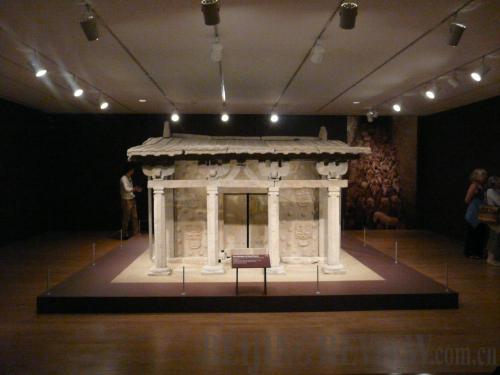|
 |
|
THE DEBUT: Song Shaozu's sandstone house sarcophagus had never been displayed in its entirety before the Clark's exhibition (MAGGIE RAUCH) |
"The official reports on these sculptures have not been published yet; they have never before been seen by the public, and they will change the way we look at tomb sculptures," says Annette Juliano, a professor of art history at Rutgers University's Newark campus, a scholar who worked with the Clark to secure the artifacts.
This is the museum's first ever archaeological exhibition, and it has more in common with Through Shen-Kan than just its China theme. All three are part of a Web of stories that span a wide historical, geographical and cultural range: the rediscovery of an art collector's "prehistory" as a China explorer; the exhibition of a remarkable and unique tomb never displayed in China; a summer expedition from Taiyuan, Shanxi Province, to Chengdu, Sichuan Province, for two Oxford University students; and an extensive and arduous photojournalism project executed by Chinese photographer Li Ju.
None of this would have happened, says Conforti, if not for a Beijing traffic jam. A representative of the Clark, visiting with officials in the Chinese capital to try and get them to accept a loan of the Clark's French impressionist collection, found himself stuck in Beijing traffic with one of those officials. As a way to building rapport, he mentioned Sterling Clark's travels in China and the fact that the 100th anniversary of the expedition was approaching.
That conversation led the Clark to reconsider how it was handling that period of its founder's life. They posted the travelogue's text online along with more than 100 photos taken during the 1908 expedition—landscapes, people, and religious sites throughout Shanxi, Shaanxi and Gansu.
|
